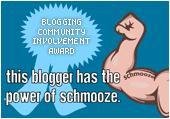If you live in the Greater Vancouver Regional District (GVRD), or, if you are visiting between now and March 4, 2007, you must absolutely get over to the Surrey Art Gallery on 88th Avenue!
This is by far the best exhibit i have seen at this Municiple Gallery. I loved all of the sculptures on display, but one or two i favoured. Here is just a small sample to view, and i will continue this Post as the weeks go by.
unit tea 2000
Artist: Michael Massie
"Massie is of mixed Aboriginal-European background and has become notable for his synergetic joining of Western art influences and techniques with Inuit imagery. His symbolic use of the ulu to probe his identity and understand the Inuit cultural origins of his mother defines his conceptual approach in his work. The teapot form was inspired by memories of his maternal grandmother. In
unit tea, the two come together, but are transformed beyond easy recognition. We recognize the resonance of the ulu shape but the arched teapot seems more suggestive of the sleek curing body of a narwhal. Because Massie's work resists categorization, it calls into question existing definitions of Inuit art. He is conscius of this: '
All I really want to do is express what I see. If it comes out as being Inuit, then I think that is fine: if it comes out as being contemporary, that is also fine. I think that a lot of times I have a tendency to put the two of them together to see what happens.' [Fox 1996.p20; p. 21 inuit sculpture now, National Gallery of Canada,2005] "
Shaman Beckoning Spirits 2004
Artist: Abraham Anghik Ruben
"The flat front of Shaman Beckoning Spirits communicates the idea of a barrier between everyday life and the spirit world. Represented by the masked face and outreaching hands, the shaman is the intermediary who approaches animal spirits on behalf of the people. The joined and flowing forms of the bear, seals, and birds hidden behind present a lively contrast to the austere frontal view and convey the richness of the spirit world. A second interpretation offered by the artist relates to how the introduction of Christianity changed the status of the shaman, reducing once-powerful leaders to beggars in their own community. By extension, the shaman here is begging Inuvialuit Inuit not to discard their respect for traditional ways and knowledge." [p.27 inuit sculpture now, National Gallery]
This is my #1 favourite: The Shaman's Vision (1999) is one of Nasogaluak's most striking sculptures.

Artist: Bill Nasogaluak
"At first glance, the large void and missing eyes are disturbing" --
actually i did not find this so at all, rather, it instantly struck a cord deep in my soul -- "despite the beautiful proportions of the lower face. Part of the challenge for the artist was to make such a void the central part, yet when one recognizes that the figure is seeing through the eys of the bird, the reliance of shamans on the spirit world of animals becomes potently clear.
"It's about a shaman getting his vision, his direction, and his thought from the bird. He doesn't see as the man. He sees as the bird." The subject is a recurring one in the artist's work relating to Gooblualooq, an important shaman whose spirit helper was a hawk, and who was known and respected around the turn of the century. Because this depiction of a shaman is related to a specific historical figure, it underscores the actual place of shamanism in the Inuvialuit Init belief system." [p23, inuit sculpture now, National Gallery of Canada]
(....to be continued...)











